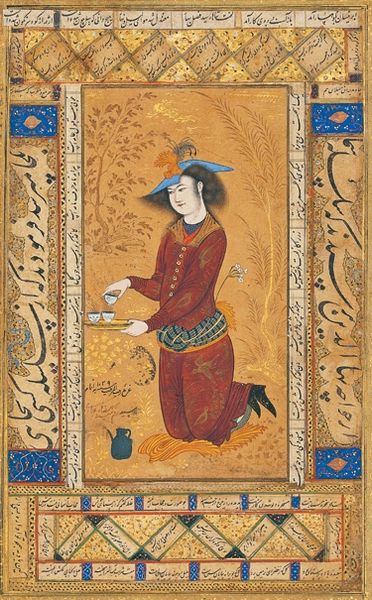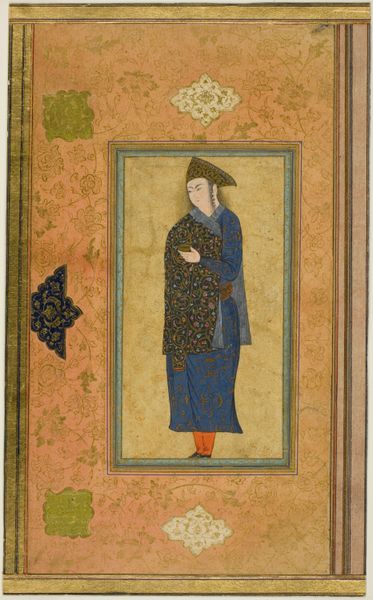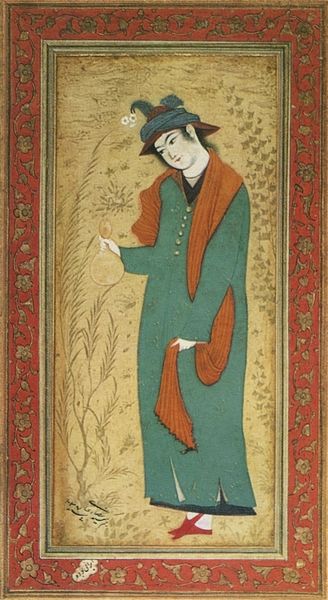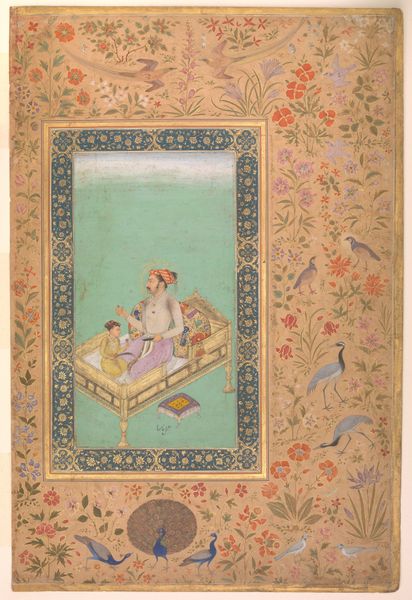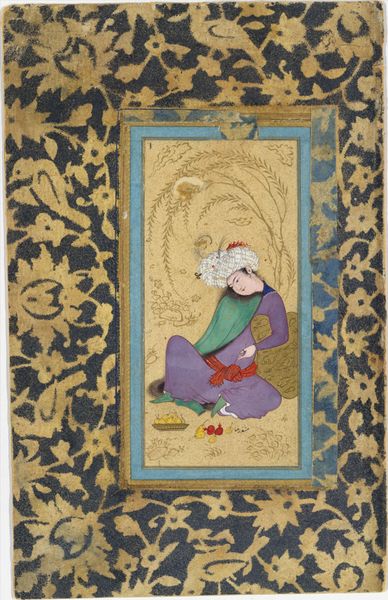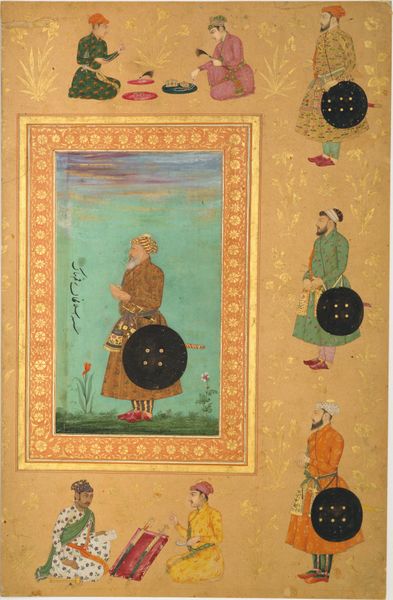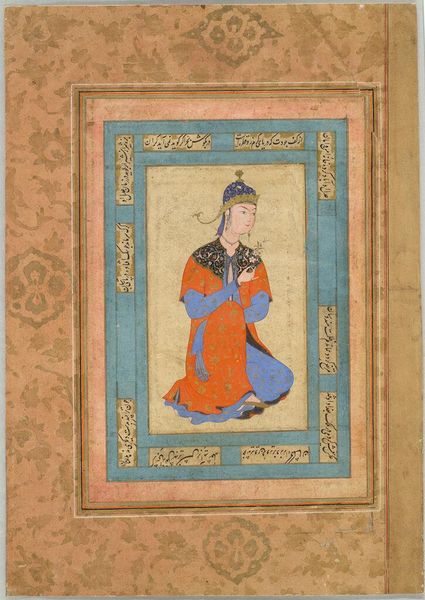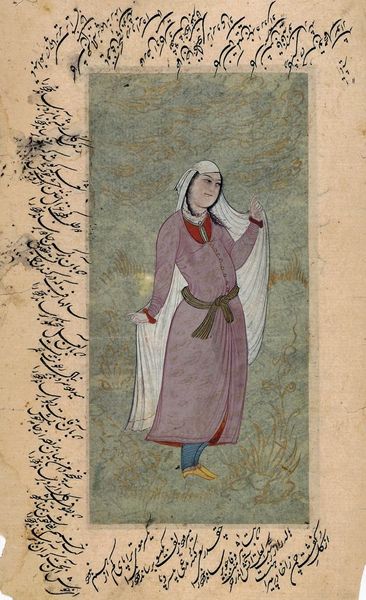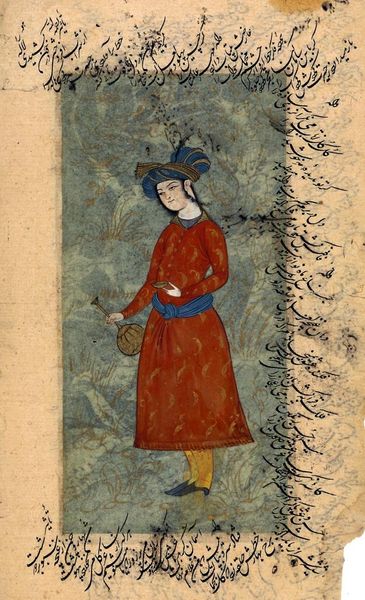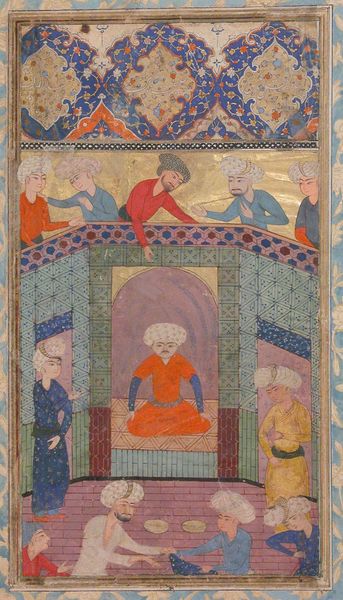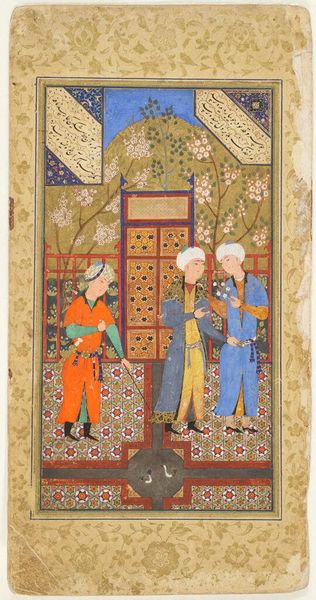
tempera, painting, ink
#
portrait
#
narrative-art
#
tempera
#
painting
#
asian-art
#
figuration
#
oil painting
#
ink
#
naive art
#
orientalism
#
islamic-art
#
watercolour illustration
#
miniature
#
realism
Copyright: Public domain
Curator: Our next piece is Reza Abbasi's "Youth Reading," created in 1626 using tempera, ink, and perhaps a watercolor illustration. Editor: There's a gentle quietness to this piece. The delicate linework and muted colors create a sense of peaceful contemplation, yet with a richness and opulence to suggest refinement. Curator: Let's focus on how Abbasi uses line to define form. Notice the sinuous contours of the youth's body, echoed in the swirling patterns of the backdrop. It establishes both shape and provides ornamental detail within the two-dimensional plane. This is very common of paintings categorized as orientalism, often using portraits to promote oriental aesthetics. Editor: Indeed. That careful attention to decorative elements, seen in the youth’s turban and the ornate chair, speaks to the painting's historical context. As miniature artwork it reflects a time of imperial grandeur. Consider also how such imagery can solidify an exoticizing vision of Middle Eastern identity and aesthetics for global art viewers and art historians, alike. Curator: The color choices, the golds, reds, and blues— are deliberate. They enhance the flat picture plane of the scene while offering an engaging focal point on the face of the young scholar. Also, I notice how the subject of reading or learning gives the young person portrayed an elevated status in the world of Islamic art. Editor: True. One can explore how the act of reading, a window into knowledge, carries deep socio-political weight, shaping perceptions of intellect and power in both Eastern and Western visual traditions, despite such artistic differences. Curator: Looking at it again, Abbasi's expert manipulation of line and color still arrests our eyes after all these centuries. The symmetry feels disrupted ever so slightly due to the slant of the reader's head, a creative detail that speaks volumes to our understanding of the artistic liberties taken in miniature painting. Editor: I'm struck by the image as a powerful reflection on the cultural moment that informs the artist's technique. This allows us to understand oriental portraiture traditions a little better in contemporary society.
Comments
No comments
Be the first to comment and join the conversation on the ultimate creative platform.
